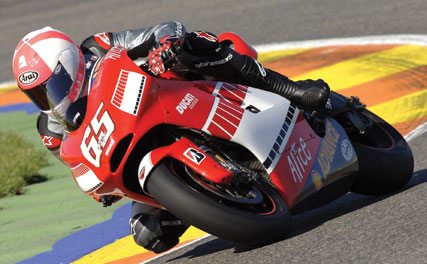Prototyping Motorcycle Engine Designs
Ducati builds one of the world’s finest racing and racing-inspired motorcycles that are fueled by innovation in design and engineering. Since 1926, the company has won many accolades including numerous World Superbike Championships on the track. One of the key challenges for the company is to cut their time-to-market to as low as possible by shortening their product design process. To help meet this challenge, the entire design process is validated using FDM prototyping systems from Fortus. FDM enables Ducati to build both concept models and functional prototypes from ABS, polycarbonate and polyphenylsulfone.
“To keep Ducati at the forefront of engine design, we sought a technology that could make accurate, durable prototypes quickly.”
— Piero Giusti, Ducati
Compressing the Design Cycle
Investing in FDM 3D printing technology allowed Ducati to cut 20 months of development time on its engines. A flagship success for the design team, the Desmosedici engine was both designed and manufactured in only 8 months, in contrast to their previous engine which took 28 months as the majority of their prototypes were outsourced to different vendors.
Using two FDM prototyping systems, the design team built a prototype engine composed almost entirely of polycarbonate components. The design included a twin-cylinder oval-piston configuration, which engineers considered the best layout to add power while complying with MotoGP regulations. The engine would have the power and torque of a conventional twin-cylinder engine and have the additional performance necessary to compete with the multi-cylinder engines.
Then a change in strategy led engineers to reconsider cylinder configuration and redesign the engine with four round pistons that employ a two-by-two firing order that reproduces the working cycle of a twin-cylinder engine. The four pistons were configured in L-shaped layout. This meant it would comply with existing MotoGP regulations while setting a new benchmark for the international motorcycle industry. The new engine design was again prototyped completely from polycarbonate.
